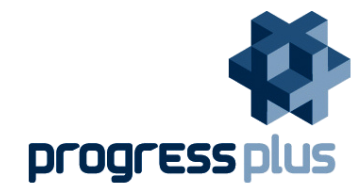Many manufacturing companies mistakenly believe or are steered into the decision by companies with a vested interest that they need ERP system over an MRP system. To help make sure you never do the same, we will explain the difference between an MRP System and an ERP System.
ERP stands for Enterprise Resource Planning and is an information system designed to coordinate the resources, information and processes within an organisation. It comprises of a common database that provides interfaces and information to every department within the business.
Depending on which definition of MRP you follow there are different interpretations – Materials Requirement Planning (MRP) and Manufacturing Resource Planning (MRP II), which then evolved into ERP. As ERP systems have developed some have moved away from their manufacturing roots. This has resulted in failed implementations due to the chosen ERP system’s processes not matching the business requirements.
ERP covers areas such as:
- Accounting (nominal ledger, fixed assets, accounts sales/purchase ledger etc)
- Human resources (payroll, time sheets, training etc)
- Manufacturing (bill of materials, QC, managing the manufacturing process etc)
- Supply chain (stock control, purchasing, scheduling)
- CRM (sales and marketing, support and customer service)
- Project management (managing costs, time and activities)
- Data warehousing (document management)
Most of these areas are already covered either partially or completely by MRP. The perceived benefit of ERP is to have a single solution to manage an entire company’s information structure and processes. There is generally a reduction of data duplication as information is entered only once and users often benefit from a common interface, thereby reducing training. A single solution only requires a single vendor, potentially ironing out data conflicts between different applications. Or at least this is the idea.
Any system – MRP or ERP – needs to also provide security at user level to ensure that the right employees have access to the right information. Each and every section mentioned above needs the ability to either block access or provide read-only access.
Where does MRP stop and ERP start?
A MRP system focusses on the processes from:
- quote,
- job costing,
- sales,
- raising works orders,
- stock control,
- purchasing
- all stages of manufacturing through to invoicing.
Traditionally they tend to exclude processes such as accounting. These lines have been increasingly blurred in recent years as systems rely on similar database structures.
Previously a MRP, accounting system may have each relied on their own bespoke databases, requiring significant customisation and consultancy from the relevant vendors in order to get the systems communicating together. With some systems today running on platforms such as SQL server it is now much easier to set up permanent, stable data links between systems. In fact ProgressPlus offers a seamless link between its key applications and accounts software such as Sage and Pegasus.
There are caveats to the above. The statement often given that ‘we are the authors and can provide a single source solution’ is often a falsehood. Many systems have evolved through acquisition of companies that produce one element (such as CRM) and trying to integrate it to the core system, rebranding it in the process to disguise its origins.
Implementation
Due to its breadth of coverage across an organisation, the problems associated with implementing ERP over MRP will be greater by default, potentially increasing risk of failure. More departments are affected and legacy data for each area of the business needs to be manipulated into a format where it can be migrated, assuming that this is possible at all. The scale of the task can also be too daunting for some, with many failed installations occurring due to incorrect or lack of use of the system. The setup of the system is also important. Many make the mistake of mirroring the setup of their legacy systems, which may require considerable customisation of the new system and runs the risk of carrying on the mistakes as before.
Of course, at this point you have already parted with your cash, spending tens or even hundreds of thousands of pounds, so many companies feel compelled to shoe-horn their company to fit the system.
While many implementers successfully adopt the approach of switching all applications over to a new single system, for others this can prove too much in one hit. A more flexible system would allow companies to implement at their own pace rather than forcing them to go live across all departments from day one. Many start with concepts that are simple to understand such as stock control or purchasing before implementing complex routings or full MRP part ordering.
After Go-live
Companies often fail to take into account the ongoing costs associated with traditional MRP/ERP software. You cannot compare it to off-the-shelf products like MS Office which, once paid for you just get on and use. As staff leave, their replacements require training, perhaps off-site.
Many systems require days of training per module, so if a staff member covers more than one department you may have to consider several days out of their schedule as well as the daily training rate.
Furthermore, you will invariably want to customise elements of the system or generate bespoke reports, which often requires consultancy services from the vendor. Every time you need to store or analyse data differently there may be a costly invoice tied to it.
Many software vendors are service-led in the fact that they cannot survive on the initial sale value alone – they have to generate revenue through ongoing annual ‘value added services’, training and consultancy. The industry standard for calculating maintenance renewal cost is generally anywhere from around 15%-22% of the initial software cost. The more enterprise-wide the software, the higher the initial cost, the higher the ongoing maintenance contracts.
What should you do?
When considering an ERP system for a manufacturing organisation the core competences and historical pedigree of the system must match your business – manufacturing. Getting your hands on the software in a meaningful way prior to purchase is the best (and only) way to ensure the product’s suitability to your needs. If that is not an option, then speak to as many customers of the existing system as you can. Learn its strengths and its weaknesses. Maybe the weaknesses will not affect your business, but at least you will be aware of them.
The best practice should be to select the ‘best in class’ product for the task at hand. If, for example an ERP’s accounts facility is lacking or less suited to your business then maybe a better solution is a separate MRP and account system that can interface to each other.
Cost plays an important factor. E may have the lesser value than M in a game of Scrabble, but the exchange of the letters at the front of your chosen information system can have a major impact on your balance sheet without relational improvements to your business.
To help you to select the right system download our guide – how to select the right production control system.

